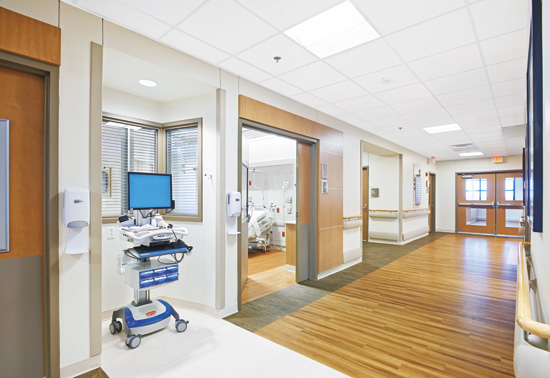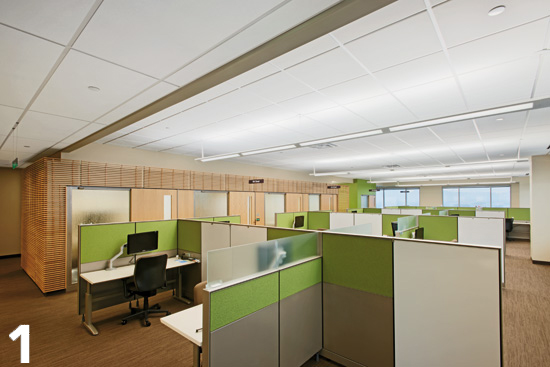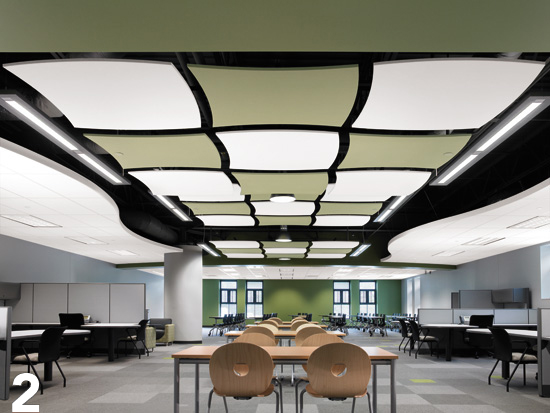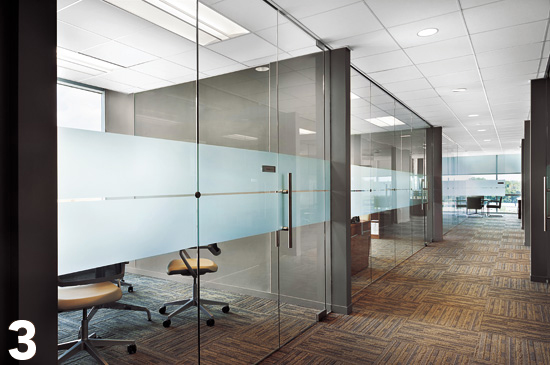Innovations in Acoustical Ceilings for Today’s Flexible Interiors
Acoustic Solutions in Offices
Traditional workplaces can be generally described as a combination of open plan and closed plan design. Open plan designs include cubicles and open spaces for professional, clerical and administrative offices. Closed plan designs, which provide for maximum confidential privacy, include management offices, human resources office, legal offices, conference rooms, doctor's offices and medical treatment rooms.
To achieve total acoustic performance, the ideal combination of sound blocking and sound absorption, an acoustical ceiling product should perform at a high level of both CAC and NRC. Ceiling panels with high CAC and NRC ratings help block and absorb unwanted sound in open office spaces, and even more importantly in closed offices where privacy is key.
More recent architectural design trends lead away from traditional design, and we consider the open office as being comprised of both focus areas and collaboration areas instead. In this new design approach we consider function to drive form, and we'll discuss three specific work areas: focus areas, collaboration areas and privacy areas.
Total Acoustic Quality in a Healthcare Environment

Photo courtesy of Armstrong® Commercial Ceilings
A healthcare setting, where information of a personal nature is often transmitted through speech between patient and doctor, doctors and nurses, etc., amplifies the need for speech privacy.
Privacy, measured by the Privacy Index, is important in a healthcare setting. When information of a sensitive nature is verbalized, a patient within a closed room should feel certain that the information will not transmit beyond that space. New federal rules give guidelines on how to create speech privacy to ensure that patient's health privacy is preserved.
HIPAA is the Health Insurance Portability and Accountability Act of 1996, which protects the privacy of individually identifiable health information. The point is that each person is entitled to the privacy of his or her medical history, and this law is enforced by the Office for Civil Rights, within the U.S. Dept. of Health and Human Services.
According to the National Institutes of Health4, department managers can use cost-effective and simple strategies to comply with HIPAA oral privacy requirements:
► Consider using cubicles or screens to block sound.
► Install masking sound systems, sound-absorbent curtains.
► Install ceiling tile with high noise-reduction rating (NRC).
The addition of a ceiling with high sound blocking performance (CAC) will further assist in keeping patient information confidential.
Building design and specification both have significant impacts on speech privacy and construction costs, and the project architect can impact the methods and materials.
Besides offices and healthcare environments, there is a third category of interior spaces that needs special acoustic consideration: classrooms. That will be our next area of exploration.












